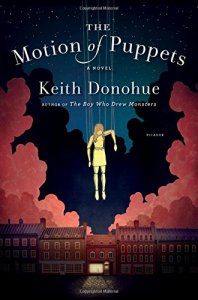Paul Di Filippo Reviews Short and Long by Michael Blumlein
Short, Michael Blumlein (Subterranean Press 978-1645241522, hardcover, 424pp, $45.00) December 2023
Long, Michael Blumlein (Subterranean Press 978-1645241539, hardcover, 360pp, $45.00) December 2023
For many years, I saw Michael Blumlein regularly at Readercon. We had pleasant chats, for he was congenial, simpatico, funny, and smart. Then one year I asked him if he were returning to the West Coast immediately after the con. “No, we’re going to Rhode Island like we do every year. My wife’s family has a summer house there.”
I was flabbergasted. “Rhode Island? But that’s where I live!”
And so after the mild amazement at our mutual ignorance faded, we all began to have further annual hangouts after Readercon. My partner and I would go to the lovely beach town of Quonochontaug (don’t try to pronounce it; just say “Quonnie” to rhyme with “Connie”), and the Blumleins would come to Providence. This further intimacy enhanced my admiration for the man—especially when his latter visits displayed him courageously and quietly battling cancer with the rarest of good spirits—but they were not necessary to make me admire his fiction, for the fiction itself had already earned my enthusiastic embrace.
Now, in two generous volumes, the rest of the world can get a handle on what a fine and unique writer Blumlein was. And, thanks to the inclusion of a lone essay, “Thoreau’s Microscope,” written and published as he was nearing death, you might also get a glimpse of his noble, selfless, stoic nature. (He passed in 2019, at the age of seventy-one.)
The massively impressive bulk of these collections militates against me detailing every story, but we can certainly hit some highlights, and try to suss out what made Blumlein’s writing so powerful and emotive. To foreground my conclusion, I believe that Blumlein was “The Last Transgressive.” In a line with William Burroughs, J. G. Ballard, Lucius Shepard, early Iain Banks, early Ian McEwan, Harlan Ellison, Norman Spinrad, Samuel Delany, and a handful of other brash, take-no-prisoners authors, he focused on hot-button issues (some of them seeming to have idiosyncratic relevance to him), traced out their implications in coolly clinical ways, then stepped back to watch readers tiptoe gingerly across his literary minefields. There really seems to be no current genre writer working this gambit these days. “Dangerous visions” have been replaced by safe spaces.
The volume titled Short collects all of Blumlein’s fiction of moderate length, from his first sale in 1986 to his final appearance in 2012. The stories are presented in chronological order, which would normally give us a chance to chart evolution of style, etc. But Blumlein—a practicing physician—emerged fully formed as a writer. He hit his mark at the outset and continued as first displayed. This certainly stemmed from the fact that he was already thirty-eight years old in 1986.
His first two sales—“The Brains of Rats” and “Tissue Ablation and Variant Regeneration”—caused small shockwaves in the field. The first tale deals with jagged gender issues as the scientist narrator contemplates unleashing a virus to wipe out future births of either males or females. The second outing is a tour-de-force of body horror involving Ronald Reagan under the experimental knife.
“Drown Yourself” is Blumlein’s flirtation with cyberpunk, as hero Johnny Jukes attempts some postmodern mating rituals. Blumlein touches on one of his preoccupations—familial secrets—in “The Wet Suit”, where a son must confront salacious revelations about his dead father’s past.
The tangled, gothic, complex web of feelings between husbands and wives and between lovers preoccupied Blumlein, and we see a good example in “The Thing Itself,” from 1988. Proleptically, the man is dying of cystic fibrosis, and we find lines such as “Love requires health” that presage Blumlein’s own troubles. “Snow in Dirt” opens thus: “It can happen. Once in a lifetime it should. I found the girl of my dreams in the garden. She was buried in dirt.” “Isostasy” has affinities with the work of, surprisingly, John Crowley, a fellow who might almost be seen as Blumlein’s writerly mirror image. And yet, in this gentle tale of hidden pastoral occult doings—modeled undeniably on the Quonnie region—Blumlein reveals a more mystical and reflective side to himself and his work.
Finally, “Paul and Me” recounts the unforgettable melancholy love affair between legend Paul Bunyan and a mortal man, which ends with Bunyan’s death from a modern plague. It is one of those tales that SF specializes in: you lay out your astonishing novum in a single, Hollywood-pitch sentence, then follow through in all its most extreme ramifications.
 The paired volume, Long, holds all of Blumlein’s novellas. (He wrote several fine and daring novels too, naturally.) Curiously enough, he did not attempt this extended format until 2009, twenty years after his debut. But by that point he was assuredly a master, for these longer tales are all pitch-perfect and impressive.
The paired volume, Long, holds all of Blumlein’s novellas. (He wrote several fine and daring novels too, naturally.) Curiously enough, he did not attempt this extended format until 2009, twenty years after his debut. But by that point he was assuredly a master, for these longer tales are all pitch-perfect and impressive.
The opener, “California Burning,” exhibits a wry, X-Files humor. Again a son confronts his dead father’s legacy, in the form of an anomalously indestructible corpse. A tale of cloning gone pear-shaped, “The Roberts” almost resembles in spirit that episode of The Simpsons with hundreds of Homers. We see now that Blumlein’s mordant humor underpins even his grimmest work.
If you have ever read the autobiographies of such eccentric scientists as John Lilly and Kary Mullis, you will appreciate how deftly Blumlein captures that vibe in “Success”, which finds the obsessed “Dr. Jim” seeking a kind of Master Metaphysical Equation, while subjecting his poor wife to hell. Not that she can’t give as good as she gets. “No Fast Dancing” is a heretofore-unpublished play script in the manner of Edward Albee, again zeroing on inter-gender psycho-tortures that bleed over to physicality.
Finally, at over 100 pages in length, “Longer” charts the researches of two scientists, Cav and Gunjita, in a meticulously limned near-future setting rare in Blumlein’s canon. It’s a world contoured by the “juve” treatment, which can give recipients three lifetimes. The crisp rat-a-tat dialogue here shows off Blumlein’s skills in this area.
Theodore Sturgeon was at heart a romantic who believed in testing his characters to destruction, presenting them with “impossible” challenges precisely slanted to their basic natures, which they must overcome to reach stability and happiness, in a universe slightly weighted towards goodness and grace. Blumlein reminds me often of Sturgeon, except that his characters generally fail their ordeals in a cosmos that is indifferent at best and hostile at worst. Which worldview hews more accurately to reality is debatable. But like Sturgeon, Blumlein was deeply authentic, caring, and desirous of sharing his vision with the world.
 While you are here, please take a moment to support Locus with a one-time or recurring donation. We rely on reader donations to keep the magazine and site going, and would like to keep the site paywall free, but WE NEED YOUR FINANCIAL SUPPORT to continue quality coverage of the science fiction and fantasy field.
While you are here, please take a moment to support Locus with a one-time or recurring donation. We rely on reader donations to keep the magazine and site going, and would like to keep the site paywall free, but WE NEED YOUR FINANCIAL SUPPORT to continue quality coverage of the science fiction and fantasy field.
©Locus Magazine. Copyrighted material may not be republished without permission of LSFF.







